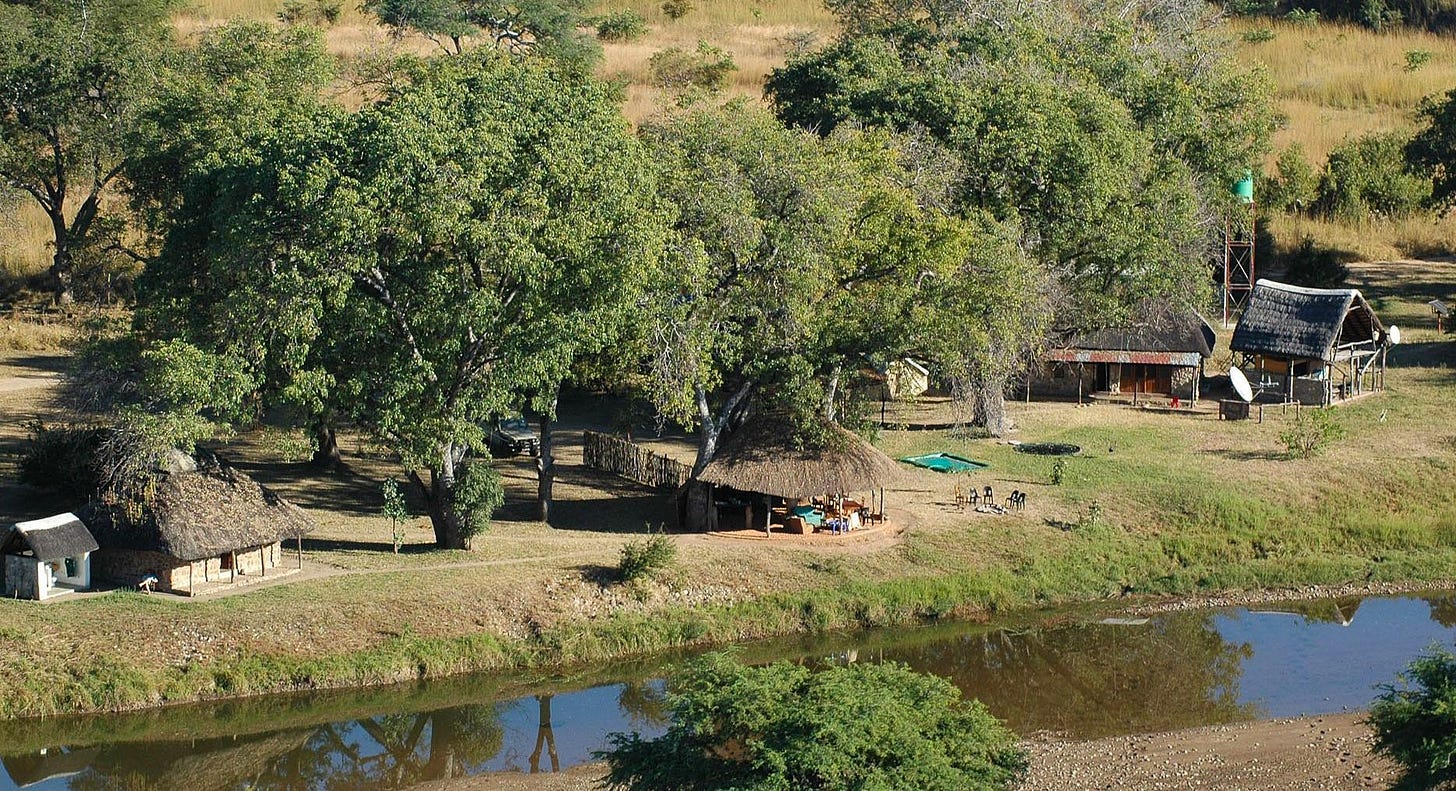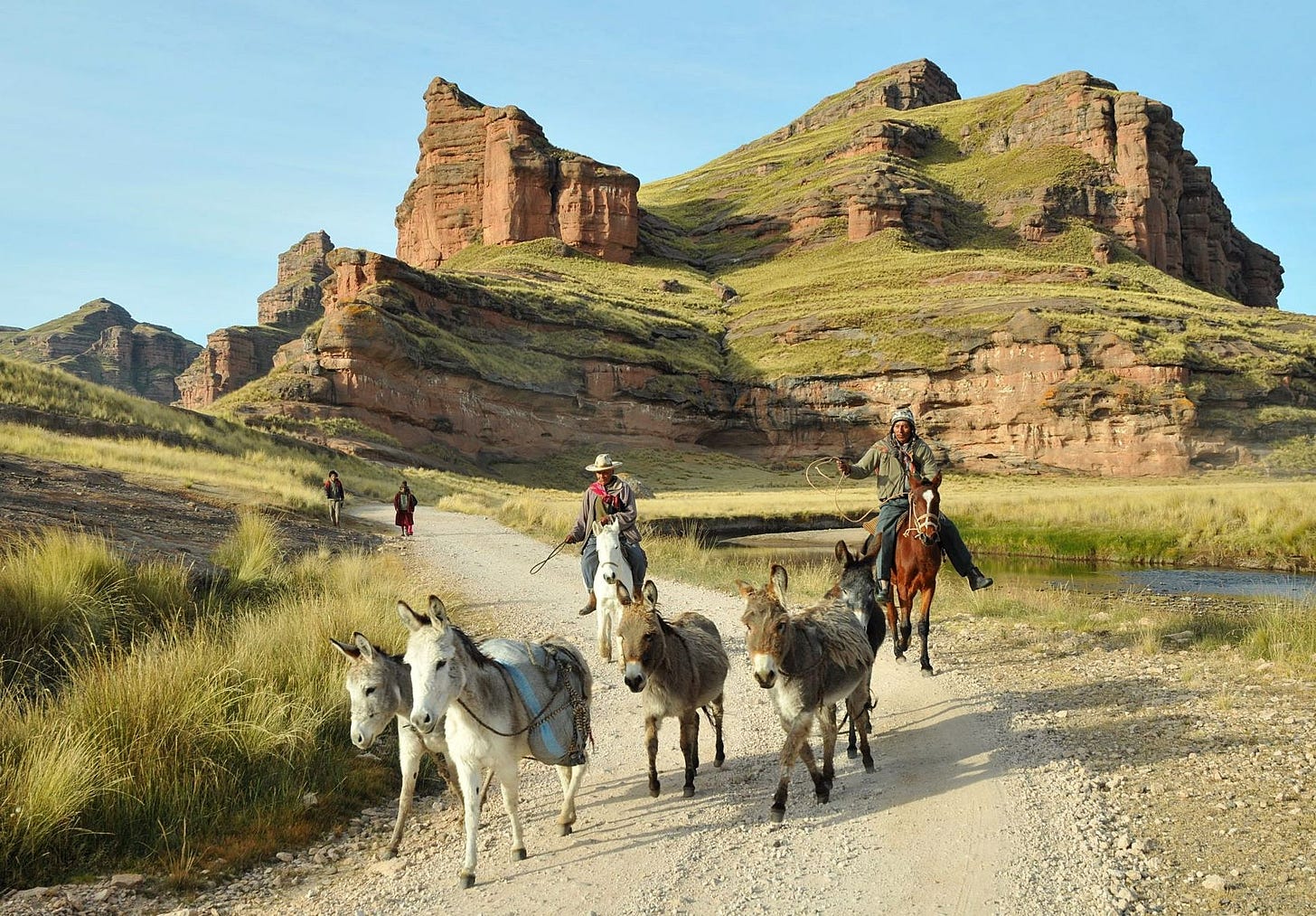Titan of the Forest
✤ The Nature of Things: A giant mushroom, the world's largest
All my life, I have treasured Nature finds. I post photos of these wild discoveries and pocket keepsakes, explaining their natural history and what they mean to me. In the process, I hope to inspire curiosity about Nature in my readers. I also hope you’ll share your own Nature finds!
Once upon a time, a young family went to live in Africa. Their new home was in the middle of a National Park called North Luangwa in Zambia. Their house was made of stone and thatch, fat geckos climbed the walls (and bit human fingers),…
… and elephants visited the grounds.
Other animals came and went freely; lions and leopards left their pug marks, guinea fowl their tracks —like treasure trail arrows— and black rhinos their cloverleaf footprints.
Beyond the camp, as far as the eye could see, stretched miles and miles of woodland, a special kind of low, dense forest called miombo.
And, at the start of the rainy season, in late November and December, giant mushrooms would sprout and flourish there.
I would have liked to continue this fairytale by describing how, one day, the son and the daughter ventured into the forest on their own to forage for the hugest of the giant mushrooms. In fact, at the time, our kids were only about one and three years old.
No, the wild shroom in the photo below was purchased by my husband on the road from Lusaka to Mpika for the going rate of 5000 Kwacha, or about US$ 1.60 (at the time).
But he bought the fleshy delicacy from two local boys, perhaps 9 or 10 years old, who did find and harvest it themselves. (I love to picture them coming across this feast, larger than a family-sized pizza, nestling among the damp leaf litter. And no, they didn’t mention meeting a hookah-smoking Caterpillar :-)
The cap of Termitomyces titanicus (known, I’m told, as icikolowa in the local Bemba language) may reach one metre in diameter and is reputed to be the largest edible mushroom in the world (can you doubt it?).
It has an obligately mutualistic association with termites of the subfamily Macrotermitinae, meaning that the fungus and the insects depend entirely on each other for survival. The termites benefit from the relationship because they cannot fully digest the tough lignocellulose in the dead grass and wood that make up their diet, while the fungus can.
The fungus benefits because the insects provide the ideal microclimate inside their subterranean nest for it to thrive. So the termites tenderly cultivate the fungal mycelium in gardens that consist of comb-like structures made from their faecal pellets. In return, the fungus breaks down the organic matter and produces nutrient-rich fruiting bodies as food for the insects.
After being oohed and aahed over by my family, this fine specimen found its way to the camp kitchen, where it was prepared as a simple but delicious stew and served with beer and nshima (a maize meal staple) to no fewer than twenty people.
A fitting, fairytale ending for a titanic mushroom.
Today’s Wild Minute
I'm a collector of Nature quotes or quotes relevant to Nature. Ones that give me a little adrenaline rush of recognition, that I connect with personally, or that inspire me. I hope today’s quote has meaning for you, too.
❝ Wildness does not have to mean the absence of human agency; we can participate in it, aligning human will with wild will, a symbiosis that heals both land and human spirit.
~ Kara Moses
Thank you for reading! If you enjoyed this post, please consider sharing it with others or hitting the 🩶 button below. Comments are always welcome—I read every single one and love to hear your thoughts!













Ok…so I have just arrived , and your Gecko…shhh. This is important…you know don't you, you are not allowed to keep these stories , they must be totally set free to roam our world…ok so back to your beautiful Gecko…
I have not opened your post, but will attempt to let you know where your family is with this giant….Tanzania… Lovely